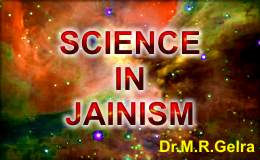
The United Nations Conference on Human Environment at Stockholm in 1972 declared:
"A point has been reached in history when we must shape our actions throughout the world with a more prudent care for their environmental consequences. Through ignorance or indifference we can do massive and irreversible harm to the earthly environment on which our life and well being depend. Conversely, through fuller knowledge and wiser action, we can achieve for ourselves and our posterity a better life in an environment more in keeping with human needs and hopes. There are broad vistas for the enhancement of environmental quality and the creation of a good life. What is needed is an enthusiastic but calm state of mind and intense but orderly work. For the purpose of attaining freedom in the world of nature, man must use knowledge to build in collaboration with nature, a better environment. To defend and improve the human environment for present and future generations has become an imperative goal for mankind - a goal to be pursued together with, and in harmony with, the established and fundamental goals of peace and of worldwide economic and social development."
It spelt out three major components:
- To attain the placidity and tranquillity of mind.
- To use knowledge in absolute union and harmony with nature.
- To attain the fundamental goal of peace.
Subsequently, the 1992 Rio-de-Janeiro-Declaration on Environment and Development provided a further impetus to reorient and reorder the problems and priorities with a view to resolving this global problem confronting the entire human kind irrespective of geographical, national, racial, ethnic and regional frontiers. It stressed the integral and interdependent nature of the earth, "our home". More significantly, it reiterated its commitment to preserve, protect and restore the earth's ecosystem - the 'Earth Charter' envisioned the creation of a peaceful, plentiful and sustainable future for the entire mankind.
The continuously organised International Conferences on peace and non-violent action are a milestone in breaking new 'grounds by highlighting the significance of adopting a simple life style which is basically rooted into the doctrines of Ahimsa. ICPNA in India has started a three-dimensional programme i.e. Anuvrat Movement (a global ethic for social excellence) Preksha Meditation (perceptive meditation) and Jivan Vigyan (science of living) for moral enlightenment and spiritual upliftment. This programme launched by His Holiness Ganadhipati Tulsiji and the great Acharaya Mahapragyaji is fundamentally a derivative of the Jain Philosophy propounded scientifically over 2000 years ago by Lord Mahavira. As a matter of fact, Jain Philosophy advanced systematic and integral thought regarding the preservation and protection of Environment. Environment includes water, air, land, fire, vegetation and it establishes the ineluctable interrelationship within them, and simultaneously it strikes a harmonious balance with all typologies of living creatures.
Man has been interested in his environment right from his inception. The Greek thinker. Hippocrates published a paper on 'Air, water and plants '. Aristotle in his writings on natural history has referred to habits of animals and environmental conditions prevailing in certain areas. Theophrastus has written about plant communities and types of plants found in different areas.
The oldest Jain Prakrit texts state that souls (life) exist not only in organic structures of human bodies and animals but also in dead masses in stones, in lumps of earth, in drops of water, in the flames of fire and in the wind and vegetation. They maintain that these five kinds of immobile beings have a sense of touch i.e. a sense of feeling and they experience any violence caused to them just as it is experienced by a human being. Therefore, Jain doctrines categorical imperative is that all peoples belonging to all nationalities must refrain from destroying them.
These five one-sensed beings occur both in subtle (suhuma) and gross (bayara) forms. In their subtle form, they are undifferentiated within their kinds all over the universe. The Sushma-plant-souls are infinite in number. They alone stay infinitely for a long time in the same form of existence. According to modern science, scattered light and gravitational forces exist in every part of the universe. Similarly Jain canons explain the existence of Sushma animate souls spreading over the entire cosmic universe. However, Jain canons do not purvey any detailed information pertaining to ways and means through which the subtle animate souls can fill up the entire universe. Probably it is a pre-canonical conception.
Achranga Pannavana and Thanang, Jain Agams have discussed these subtle animate one-sensed beings in detail in different contexts. These five immobile, one sensed being has their owned individual bodies, viz. earth-bodied, water-bodied, fire-bodied and so on. Vanaspati le plant-life exists in two forms. Firstly, it has one soul in one body. And secondly, it can possess a common body for a number of living souls. The latter type of vanaspati has a common medium of inspiration and respiration assimilation of food and the like. This concept is unique in Jain scriptures but it has not been mentioned anywhere else in other canonical literature. It is quite interesting to note that these old concepts of the Jain doctrine are reinforced by modern scientific experiments.
Any area of nature where living substances interacts to produce an exchange of materials between the living and non-living components are an ecological system or ecosystem (Transley 1935). It includes organisms (biotic) and non-living (abiotic) environment each influencing the properties of the other and both are necessary for the maintenance of life.
MIND ALIVE has established that living things not only feed and grow, but they also reproduce almost exact copies of themselves. To do this, they must pass on information, which can be used to direct the building of the copies. This is the process of genetical inheritance, the information being contained and passed on in a genetic code, the copies being built from materials in the environment that are absorbed and reformed into the materials of the living body. This part of explanation finds a striking similarity and convergence with the, Jain Agam Acharang which substantiating that:
"As the nature of the man is to be born and to grow old, so is the nature of plant is to be born and to grow old; as man falls sick when cut, so plant falls sick when cut; as man needs food so plant needs food; as man will decay; so the plant decay; as man is changing, so plant is changing."
The pattern of similarity in the behaviour of man and plant establishes the presence of soul in plants too. The Jain Agams have also advanced the same cogent arguments to prove the presence of soul in earth, water, wind and fire. The rationale behind the argumentation is to prove that the one - sensed living beings experience pain and pleasure as men do. Concomitantly, man should not cause neither harm to them nor should he disturb the equilibrium existing amongst them.
However, the unprecedented pace of development in the field of science and technology has witnessed a mind-boggling progress in the industrial world. Such a rapid advancement or urbanization and industrialization has ultimately resulted in myriad environmental pollution problems of horrendous nature.
To preserve, protect and sustain the environment from pollutant agents, a resurgence in human values is of categorical need today. The underlying significance of Jain doctrines, principles and ideals lies in the fact that it offers holistic perspective on how to bring a fundamental transformation in the perception and approaches of the inhabitants of this earth to coexist with environment by remaining sensitive as well friendly to it rather than inviting disaster for themselves. A non-violent society, a simple life style culture is fully capable of providing broad contours of devising both pragmatic and scientific solutions for the same.
The Acharang Sutra sounds an alarming note about the inescapable fatal consequences of destroying the environment. Its very essence is epitomised as under:

Impliedly, the destruction of environment is an act of dastardly violence, paranoia and abominable attachment leading ultimately to the death and dark hell.
 Dr. Mahavir Raj Gelra
Dr. Mahavir Raj Gelra

